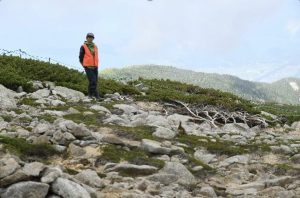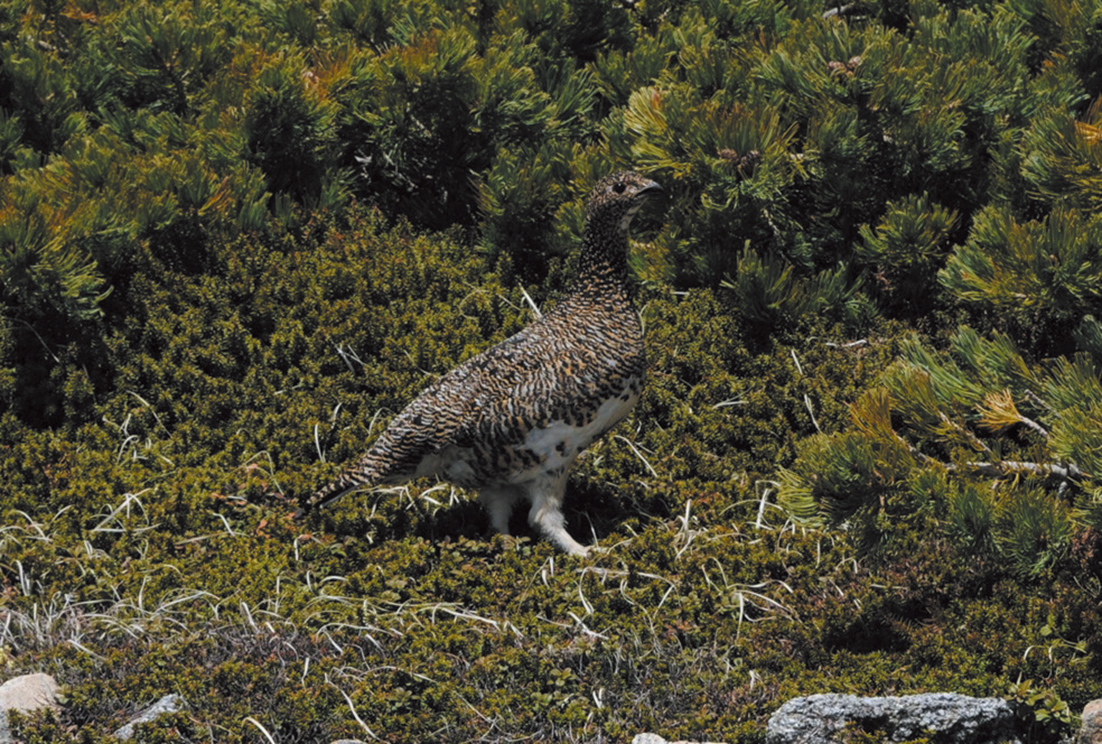【CONTENTS】Rules for observing Rock Ptarmigan and important points for climbing the mountain

The Japanese rock ptarmigan, does not see humans as their enemy. That is a wonderful thing. That trusting relationship can be maintained forever by abiding by a few basic rules. As a general rule, be still for a moment and keep a quiet distance from the rock ptarmigan so as not to excite it. If you make exaggerated movements or raise your voice, the rock ptarmigan will run away in surprise. If these incidents continue, that may destroy the trusting relationship humans and rock ptarmigan have with each other.
【 Basic rules 】
①Watch over them quietly
It is natural that you will be excited to see the long sought after rock ptarmigan. However, when you see them, it will be in their home. Chasing them or getting too close unnecessarily is very stressful for the rock ptarmigan. When raising her young, the mother rock ptarmigan will signal to her chicks with her voice, so loud voices are strictly prohibited. Please observe them softly and quietly.
Always act while thinking about how you would feel if you were the rock ptarmigan. That should give you some understanding of what the rock ptarmigan would not like. Let’s not forget we are trespassing in their home.
※Touching or capturing a rock ptarmigan without permission is illegal and subject to punishment by law. There was an incident in the summer of 2018, when some insensitive mountain climbers posted photos on social media holding a rock ptarmigan chick. This behavior is absolutely inexcusable.
②Maintain some distance
How much distance should be maintained to ensure the rock ptarmigan does not become distressed. When a rock ptarmigan appears on a mountain path, as a general rule a distance of 5m should be maintained. If a rock ptarmigan moves closer to you and you make a sudden movement, that will frighten the bird, so make sure not to stand suddenly and just watch from the position you are in. Be careful to ensure a large number of people do not surround the bird and that the rock ptarmigan can move freely in the direction it wants.
③Pay attention to the rock ptarmigan’s expression
The number mentioned above is a minimum guideline. Mothers guarding their chicks are particularly sensitive. Rock ptarmigan exhibit behaviors that indicate when they are feeling stress, so if you see any of these please make sure to distance yourself from the bird.
An even stronger relationship of trust can be built when you understand what the rock ptarmigan’s expressions mean,and it is certain to show you some wonderful expressions.
Normal state
It will sometimes raise its head, but it is actively pecking at the alpine plants. It sits with its legs folded on a bed of creeping pine greens and sometimes appears to be sleeping. It is not stressed in this state.
Slightly stressed
It spends a long time looking at its surroundings and checking its environment furtively. Think about whether there is not enough distance between yourself and the rock ptarmigan, whether it is too noisy, or whether there are too many people watching it.
Relatively stressed
You are observing the rock ptarmigan and feel as if it is meeting your eyes quite frequently. It will appear to shrug its shoulders and the female will approach people raising one wing, which appears to be injured (called a “distraction display”). Give the rock ptarmigan even more distance between it and yourself. Do not run under any circumstances. Be mindful of making slow movements.
【 Observation & Mountain Climbing Rules 】
①Walk on established paths
Regardless of whether there are “Do Not Enter” signs or barrier ropes, do not stray from the walking trail, even when taking photos.
②Do not chase a rock ptarmigan when you see one
Maintain a distance from the rock ptarmigan and do not block its path. You may be preventing it from returning to its nest and warming its eggs.
③Do not pick any alpine vegetation
Alpine vegetation is also living evidence of the Ice Age. These plants only grow here. They are treasures to be cherished.
④ Take any garbage with you
Animals that are non-native to the alpine region ascend the mountain looking for discarded food scraps and destroy the ecosystem.
⑤Use designated toilets
The intestinal bacteria found in human waste can affect the flora and fauna of the alpine region.
⑥nly enter the mountain after completely wiping
the soles of your climbing shoes Make sure to remove all seeds and bacteria from areas outside the mountain.
⑦Climbing in spring
This is an important season for rock ptarmigan mating. Strict adherence to the rules is required. Rules for observing Rock Ptarmigan and important points for climbing the mountain
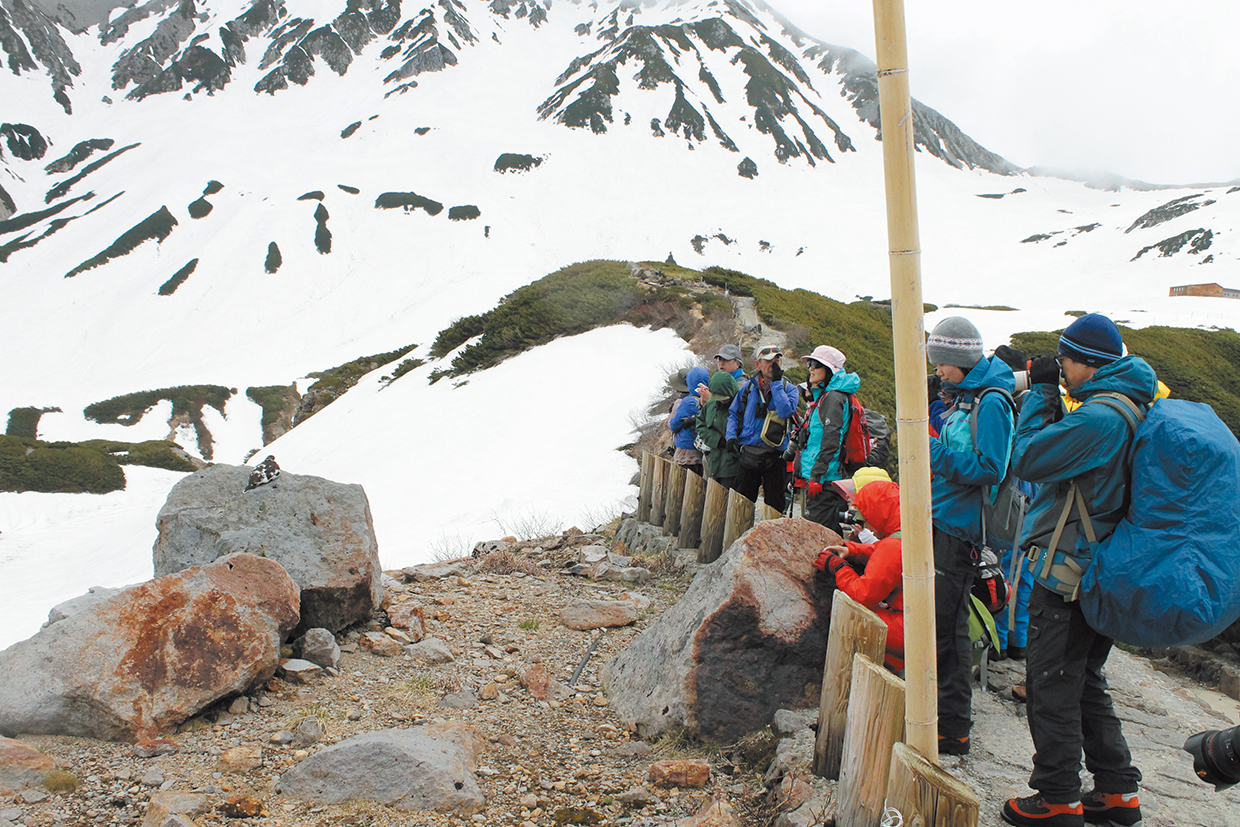
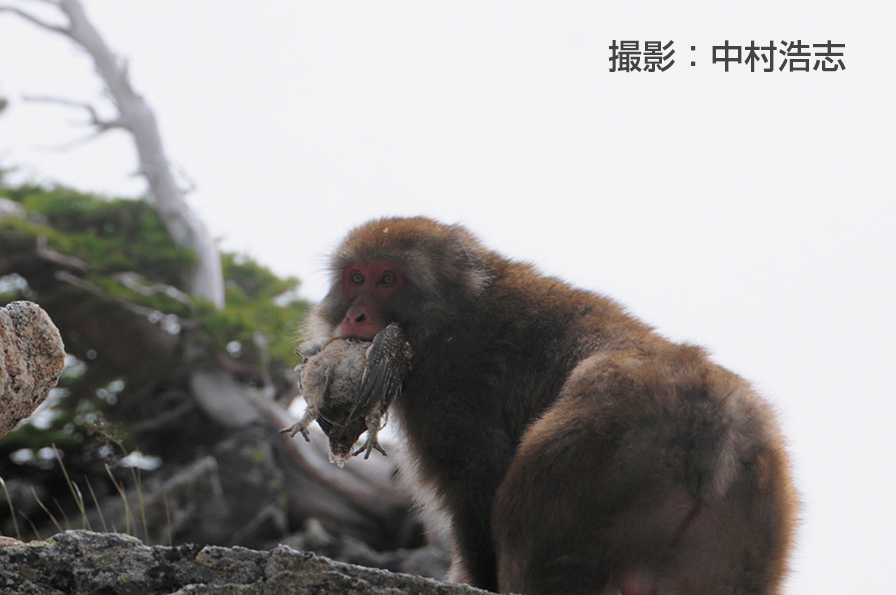
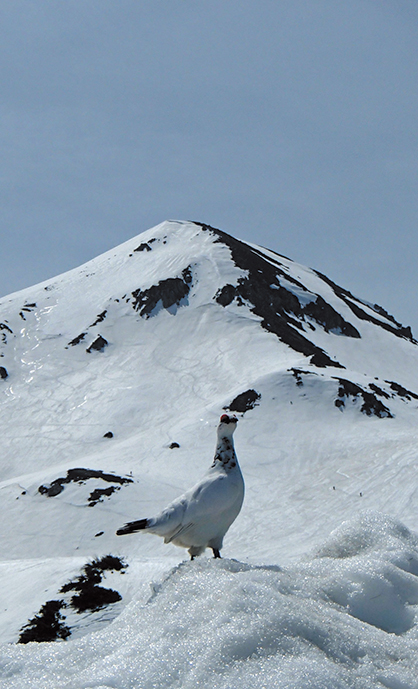
A staff member watches a rock ptarmigan family forage for feed freely after they were released from a cage through the Central Alps Rock Ptarmigan Restoration Project. Preservation activities are carried out while observing the rock ptarmigan’s expression to build a trusting relationship.